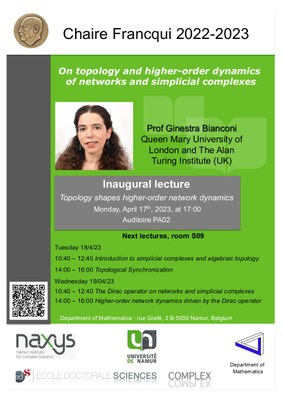Inaugural lecture
Topology shapes higher-order network dynamics
Networks encode the pairwise interactions of complex systems ranging from the brain to the molecular networks in the cell. In the last twenty years networks have provided a very successful framework to understand the interplay between the combinatorial and statistical properties of complex networks and their dynamics. Most relevantly it has been shown that the scale-free degree distribution can dramatically change the phase diagram of dynamical processes including percolation, epidemic spreading and the Ising model.
Recently it has been widely recognized that higher-order interactions among more than two nodes are ubiquitous in complex systems. For capturing higher-order interactions it is fundamental to go beyond the framework of networks and to describe complex systems with higher-order networks including not only links, but also triangles, tetrahedra and so on.
Simplicial complexes are higher-order networks that allow to investigate the underlying topology of complex systems. Despite topological data analysis aimed at characterizing the structure of data with topological tools is a widely developed and successful subject, only recently it is becoming clear that topology has fundamental importance also for revealing the interplay between topology and dynamics on simplicial complexes. In fact, simplicial complexes can sustain topological signals not only defined on nodes but also on higher-dimensional simplices, such a links, triangles, and so on. Taking into account the dynamics of topological signals such as fluxes defined on the links as the potential to transform our understanding of the functioning of complex systems.










